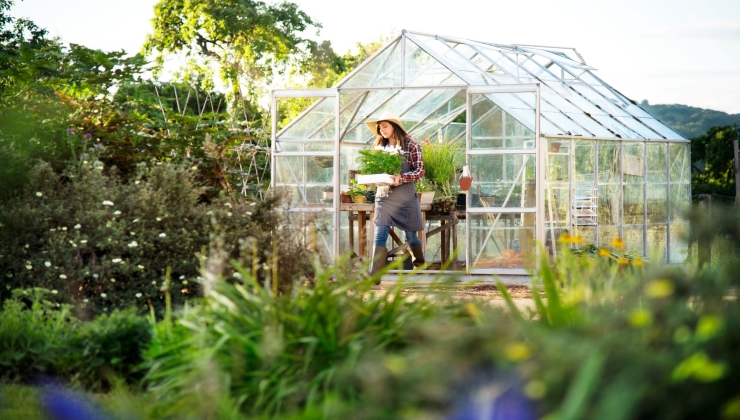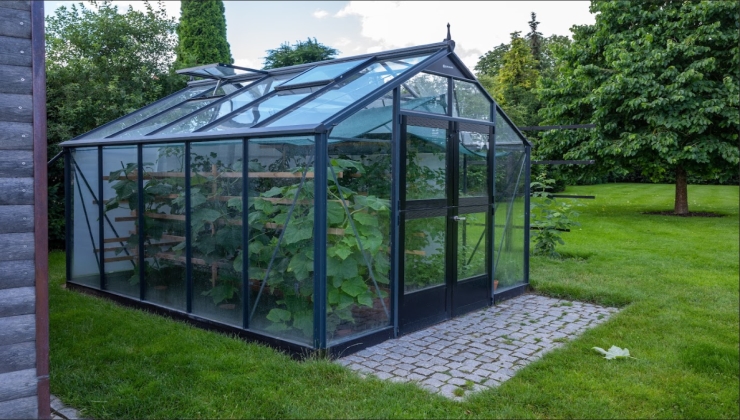Growing plants in a glasshouse lets you control the environment to optimize growth. However, maintaining the right temperature and humidity levels takes some work. Get these factors right, and your plants will thrive. Let them fluctuate too much, and you risk slow growth, disease, and even death.
In the following guide, you’ll learn the optimal temperature and humidity for a glasshouse like this AU glasshouse and how to keep your levels steady. With some simple equipment and consistent monitoring, you can create ideal growing conditions all year round.
Checking The Temperature
Keeping your glasshouse at the right temperature encourages healthy growth and wards off issues like slow development, drooping leaves, and premature bud drop. The best range is 18-30°C during the day and no lower than 10°C at night. You’ll want to aim for the middle, around 20-25°C, when the sun’s out to prevent extreme cold or heat stress.
To monitor the temperature, install a glasshouse thermometer at plant level away from vents or heaters for an accurate reading. Keep it shaded to prevent false readings from direct sun exposure. Check it at least twice a day when actively growing, and make changes as soon as the temperature veers out of range.
Heating Up A Cold Glasshouse

During winter or cool weather, extra heat keeps the glasshouse temperature ideal. The easiest heating option is an electric fan heater with a built-in thermostat. Set this to come on around 15°C to maintain 20°C+ daytime temperatures. Position the heater near an outlet to prevent cord hazards or tripping.
Propane patio heaters also warm up small glasshouses without electricity. Place the heater near the doorway where warm air can be distributed best without scorching plants. Refill propane tanks regularly so you don’t unexpectedly run out on cold nights.
Cooling Overheated Glasshouses
In summer or sunny weather, ventilation and shade keep glasshouse temperatures habitable. Plants suffer once the mercury hits 35°C. Growth slows, buds and flowers abort, and heat stress damages plant tissues.
Open any vents, windows, and doors fully to circulate fresh, cooler outside air through your glasshouse. Position your plants so they don’t block the airflow. Install electric exhaust fans low on one wall and raise intake vents on the opposite side to actively ventilate. Use shade paints formulated for glasshouses on exterior glazing to reflect heat if opening up your structure still leaves temperatures exceeding 30°C.
For rapid cooling in intense sun and heat, fogging systems periodically mist the interior with water droplets that evaporate and soak up warmth. These combine well with vertical airflow fans that circulate the cooling moisture. Just ensure no water lingers on leaves long enough to magnify light and burn them.
Getting The Humidity Right
Humidity directly impacts transpiration and nutrient absorption. Low humidity dries out plant tissues, causes wilting, and slows growth even if you water properly at soil level. Excessively high humidity encourages diseases like powdery mildew and rots. Stick within 40-60% relative humidity for healthy, thriving plants.
Humidifiers and dehumidifiers increase and decrease moisture levels as needed to hit the optimal humidity window. In drier areas, ultrasonic or evaporative humidifiers release water vapor and mist into your glasshouse air.
In more humid climates, dehumidifiers remove excess moisture to prevent fungal issues. Place these devices on shelving near your plants rather than the floor or ceiling for the most accurate humidity control.
Monitoring And Recording Conditions
Don’t just set up your temperature and humidity devices and forget about them. Actively check readings at least twice daily when growing plants so you can modify conditions before levels drift too low or high for too long.
Keep written logs or use monitoring software that records conditions over time. That way, you know if frequent excessive peaks and valleys call for equipment upgrades or changes like added ventilation and insulation.
Review humidity and temperature data seasonally as well. Tweak your glasshouse systems based on performance through spring/summer’s higher temperature and humidity and winter’s cooler, drier conditions. Ongoing improvements ensure your plants always enjoy optimized conditions.
Adjusting For Different Plants
While 18-30°C temperatures and 40-60% humidity suit most plants, some species have more specialized preferences worth noting. Adjust zones within your glasshouse to customize conditions. For example:
- Orchids like 13-24°C temperatures and 50-70% humidity levels.
- Cacti and succulents prefer slightly warmer and drier conditions from 18-27°C and 40-50% humidity.
- Tropical plants need consistently warm 25-30°C temperatures and high 60-80% humidity.
Maximize growth by grouping plants appropriately and tweaking heating/cooling/humidity equipment within each zone. Just don’t let conditions between areas vary enough to cause temperature shock when moving plants.
Final Thoughts
With attentive backyard management, your glasshouse plants will thrive year after year. Stay on top of heating, cooling, ventilating, and humidity control tailored to your plants’ needs. Then, sit back and enjoy abundant harvests protected from variable outdoor conditions.

